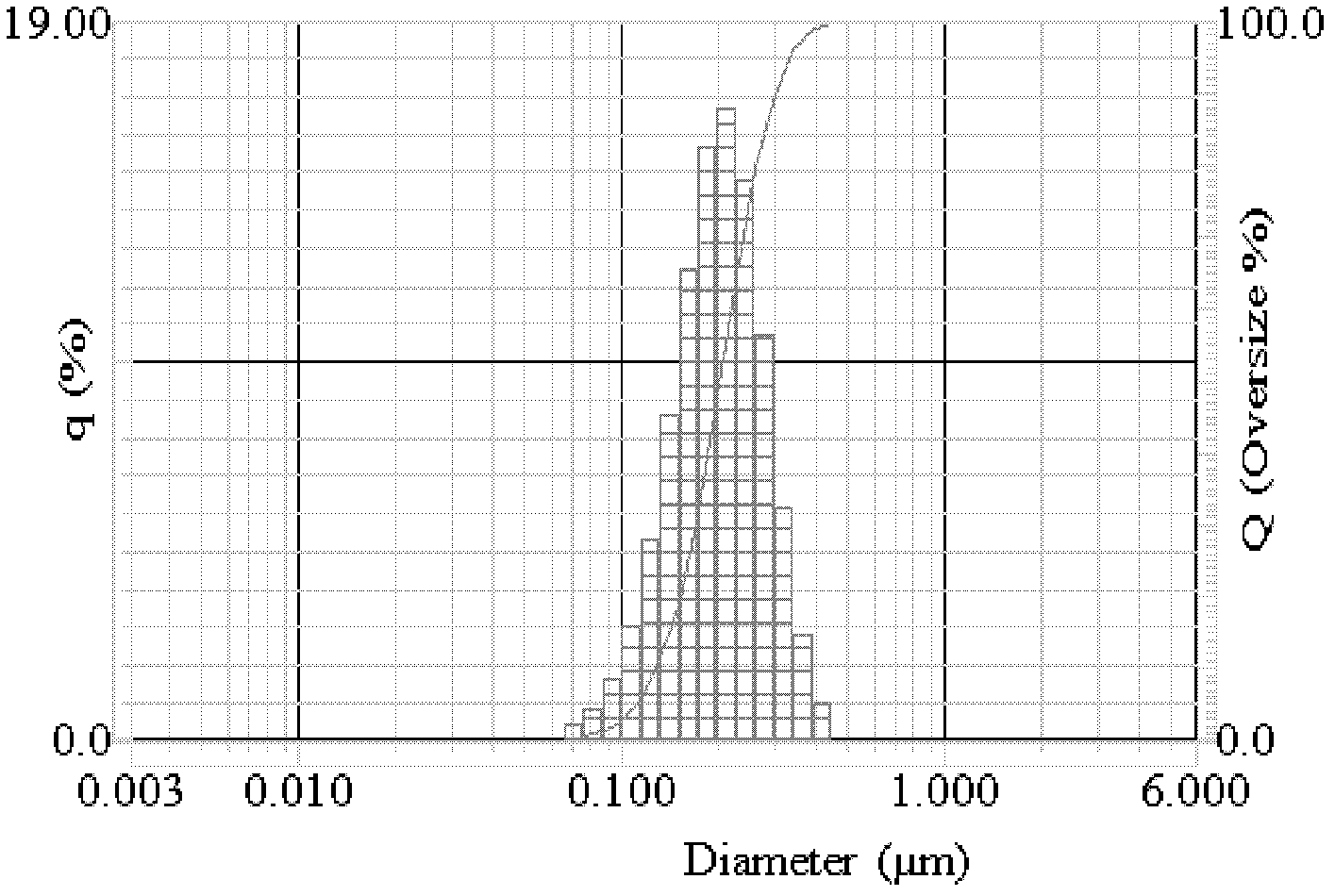Heat radiation material, heat radiation structure, and preparation method thereof
A technology of heat-dissipating materials and heat-dissipating structures, applied in fibrous fillers, polyurea/polyurethane coatings, cooling/ventilation/heating transformation, etc. problems, to achieve the effect of improving lifespan, improving compatibility and system dispersion stability, and effectively dissipating heat
- Summary
- Abstract
- Description
- Claims
- Application Information
AI Technical Summary
Problems solved by technology
Method used
Image
Examples
Embodiment 1
[0037] In this embodiment, the water-based slurry of inorganic heat-dissipating nanomaterials uses polyvinyl alcohol as a dual-functional macromolecular modifier, and the ester bonds and hydrogen bonds formed on the surface of the nanomaterials of carbon nanotubes are used to obtain a stable and dispersed water-based slurry The solid content of this water-based slurry is 25%, and the particle size of the heat-dissipating nano-carbon is all at 50-100nm, and its components and parts by weight are as follows:
[0038] Heat dissipation nanomaterials: carbon nanotubes (CN) 15
[0039] Deionized water 75
[0040] Polyvinyl alcohol (M W =2000) 10
[0041] Sample 1:
[0042] First take by weighing 15g carbon nanotubes and put into the water of 75g, adjust pH to be 9, under agitation condition, with the speed of 2ml / min, the polyvinyl alcohol of 10g (W W = 2000) dropwise into the above aqueous solution, stirring at room temperature or ultrasonic wave for 10 minutes to 12 hours unti...
Embodiment 2
[0047] The water-based slurry of inorganic heat-dissipating nanomaterials uses polyether-modified silicone as a bifunctional macromolecule modifier, and ester bonds and hydrogen bonds formed on the surface of nanomaterials of carbon nanotubes are used to obtain a stable and dispersed water-based slurry; The solid content of the water-based slurry is 25%, and the particle size of the heat-dissipating nano-carbon is 50-100nm, and its components and parts by weight are as follows:
[0048] Heat dissipation nanomaterials: carbon nanotubes (CN) 15
[0049] Deionized water 75
[0050] Polyether modified organosilane (M W =500) 10
[0051] The specific preparation steps are the same as the preparation method of sample 1 in Example 1.
Embodiment 3
[0053] In the water-based slurry of inorganic heat-dissipating nanomaterials, polyethylene glycol is used as a bifunctional macromolecular modifier, and ester bonds and hydrogen bonds formed on the surface of nanomaterials of carbon nanotubes are used to obtain a stably dispersed water-based slurry; the water-based slurry The solid content of the material is 25%, and the particle size of the heat-dissipating nano-carbon is 50-100nm, and its components and parts by weight are as follows:
[0054] Heat dissipation nanomaterials: carbon nanotubes (CN) 15
[0055] Deionized water 75
[0056] polyethylene glycol (M W =200) 10
[0057] The specific preparation steps are the same as the preparation method of sample 1 in Example 1.
PUM
| Property | Measurement | Unit |
|---|---|---|
| Particle size | aaaaa | aaaaa |
Abstract
Description
Claims
Application Information
 Login to View More
Login to View More - R&D
- Intellectual Property
- Life Sciences
- Materials
- Tech Scout
- Unparalleled Data Quality
- Higher Quality Content
- 60% Fewer Hallucinations
Browse by: Latest US Patents, China's latest patents, Technical Efficacy Thesaurus, Application Domain, Technology Topic, Popular Technical Reports.
© 2025 PatSnap. All rights reserved.Legal|Privacy policy|Modern Slavery Act Transparency Statement|Sitemap|About US| Contact US: help@patsnap.com



